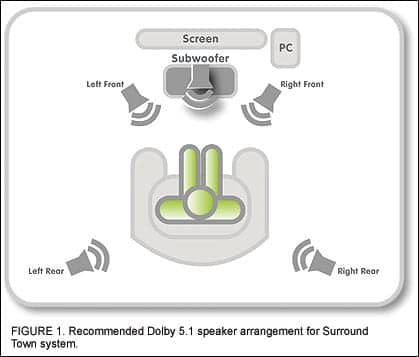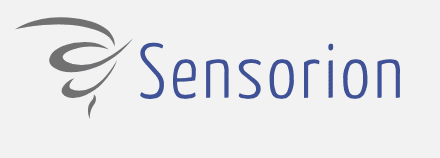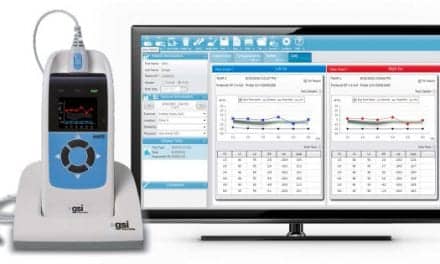Virtual reality is becoming an actual reality in our everyday lives. Numerous industries expose us to virtual scenarios to showcase their products: our real estate agent helps us shop for a home by taking a virtual tour of properties on the Internet; our hair stylist helps us see a variety of hair styles on our own heads before committing to a style; car manufacturers like Volvo use virtual reality to demonstrate the safety of their cars by allowing passengers to experience crashes in the safety of a stationary vehicle. While it may not be as exciting as a new home or the thrill ride of a simulated crash, the potential of using virtual reality as part of the hearing aid fitting process has great appeal for hearing care professionals and their patients.
“Out of the Box” Expectations
In the typical hearing aid fitting process, the dispensing professional adjusts the hearing aids using the manufacturer’s fitting rules or another method that has been successful in the past. The professional may perform real ear measurements or attempt to demonstrate hearing aid benefit with a stereo system. Some enterprising practitioners may even send patients to the neighborhood cafeteria or out on the street to experience the acoustic world through their new hearing instruments—a worthwhile approach, albeit somewhat unpredictable.
After the initial fitting, the dispensing professional typically sends the patient home with instructions to return for a follow-up visit after a short trial period or return sooner if there is a problem. When the patient returns to discuss a problem, the normal course of action is to listen to the subjective description of the issue and make an educated attempt at adjustments based on one’s fitting experiences. We may use an expert adjustment tool in the fitting software that makes adjustments based on specific client complaints that may or may not be based on research and hard data. We then send the patient out again to try this new setting and instruct them to come back if the problem hasn’t been resolved.
Imagine if you purchased eyeglasses or contact lenses, and the optometrist sent you out the door with instructions to try out the glasses and return if you had problems. As a patient, this scenario just would not be acceptable, or at the very least, it would not instill great confidence in the practitioner. After having your vision tested and your frames adjusted for comfort, you expect everything to be correct prior to leaving the office. Or imagine you’ve purchased some new electronic equipment and set it up at home. You expect to be able to plug it in and have it function as designed from the very beginning without returning to the store for changes or modifications. Today’s consumers expect a purchase to work correctly right out of the box with minimal extra effort.
It is generally accepted, however, that hearing instruments represent a different case. Most often, hearing aids are used to correct a sensory deficit, not a mechanical problem (as is almost always the case with vision correction). So we explain to our patients and to ourselves that, due to the extreme complexity of both the auditory system and our acoustic world, a series of successive approximations1 are often needed to approach a successful fitting.
It would be a boon to our professional image and our patients’ satisfaction if we could improve the accuracy of the initial hearing aid fitting. Research shows that the use of even simple sound files that represent real-world sounds to verify the fitting and adjustment of a hearing aid lowers the return rate and increases patient satisfaction. One goal Kochkin2 listed as part of a “Best Practice Protocol” was “Explore the impact on benefit and satisfaction of using simulated real-world environmental testing in a 360° sound field at the point of sale.” He commented, “Preliminary research indicates that such patient-focused approaches may lead to preferred final use gain with fewer visits, as well as enhanced expectations, since [the patients] were subjected to real-world sounds in the dispenser’s office prior to taking their hearing instruments home.”
Punch et al3 investigated hearing aid users’ preferences in the lab vs real-world environments. These researchers suggested that “exposure to real-life acoustic environments…may enhance hearing aid users’ ability to select a frequency gain characteristic that will ultimately be preferred in the real world.” Researching this specific question, Robinson & Russ4 collected data from a pool of 26 subjects. One group (Group A) was fit using a multi-media system, and a second group (Group B) was fit in a standard manner. Group A subjects had final use gain settings closer to prescriptive targets than Group B subjects. Further, Group A had an average of three visits back to the hearing care professional, while Group B averaged four visits.
A more accurate initial fit and fewer return visits for adjustments are valuable outcomes for both the patient and provider.

A comprehensive fitting system has been developed by Starkey Laboratories that is designed to provide a means for hearing care professionals to improve patient outcomes, while doing so more efficiently and meaningfully than traditional fitting protocols. The new fitting software, called Inspire OS, contains a real-world simulation that is designed to set the standard for virtual reality in a hearing aid application and has value to both the hearing care professional and the person with hearing loss.
To design and develop such a product with a clear understanding of the needs and desires of the customer, input from multiple sources was essential. Focus groups consisting of hearing care professionals were convened. Throughout four formal focus groups and countless informal observations, professionals were extremely vocal in the need for a system that was easy to use, accurate, and well integrated into the fitting process. They did not want just another separate tool.
Inspire OS is a new fitting software system that includes an acoustic virtual reality feature called Surround Town. Surround Town realistically simulates situations in which a patient may have difficulty communicating. It is tightly integrated into the fitting software so the professional can create virtual environments, while still having complete access to all adjustable parameters on the hearing aids.
While using the simulation system, another software component, Feature Validation, allows validation and adjustment of advanced adaptive algorithms as they are actually functioning in response to real-world stimuli.
Setting Up the System
Developed around Dolby® Digital 5.1 technology, Surround Town uses an off-the-shelf external USB 5.1 sound card for the PC and 5.1 surround-sound speakers. There are no specific room constraints; the average fitting room should be adequate as long as it is relatively quiet and reverberation is kept to a minimum. Figure 1 displays the ideal set up with speaker distances at 1 meter from the speaker to the ear position, with speakers placed on stands at ear level. The key is calibrating the system to a specific level at the ear to ensure that all surround sounds are played at an appropriate and realistic level.
The simulation system has an integrated calibration wizard to ensure that the PC and speakers play all audio files at appropriate levels. Calibration can be done using a sound-level meter or the integrated sound-level detector in any Starkey Destiny hearing aid. This configuration can be built with virtually any 5.1 sound card or Dolby 5.1 speaker configuration, if the professional wants to create a system that is more integrated into the room (eg, similar to a high-end home entertainment system).

|

|
Using the System
The system creates a virtual reality scenario through animated movies and 5.1 surround-sound audio files that simulate specific locations in the movie scene. Initial scenes include a Restaurant, an Automobile, and a Home with a living room and kitchen. In each movie scene, a green character represents the position of the patient (refer to the person by the door in the home scene in Figure 2). When any element in the movie scene is turned on with the click of a mouse, it will animate and play the associated sound at a realistic level relative to the patient, softer when it’s far away, louder when it’s up close.
When the virtual patient is seated at a table in the restaurant, and another element in the scene (like the waiter or another table of diners) is turned on, these sounds are presented from the 5.1 technology surround-sound speakers at an appropriate level and location. Figure 3 illustrates an example of the patient at a table with other diners. The waiter, the piano, and other tables are all active, creating a virtual dining experience. This scene provides the patient with an acoustic demonstration of a real-world environment.
Because we do not always sit at the same table or dine in the same restaurants, Surround Town allows the professional to move the virtual patient to different locations in each movie scene. The virtual reality created by the system is intelligent enough to know the location of the virtual patient and adjust the sounds according to his/her position so that each environment always sounds realistic.
Additionally, Feature Validation allows the hearing care professional and patient to view the actual operation of advanced processing algorithms as they respond to real-world stimuli. Feature Validation is not a software simulation but rather a live software monitor of the actual processing activity of the hearing instrument in response to Surround Town stimuli. The dispensing professional, patient, and any accompanying family member or friend can view what is happening inside the hearing device while the patient hears it, once again reinforcing the benefit of these advanced features.
Application in the Busy Office/Practice
Surround Town is flexible enough to be used in every part of the fitting process.
Pre-fitting: Demonstrate how amplification will help to improve hearing in a variety of listening environments.
Fitting: Verify the hearing instrument response in a variety of environments prior to stepping out of the office, and counsel the patient on how to handle difficult sound environments.
Post-fitting: Simulate troublesome situations during a follow-up appointment.
Employing Surround Town and Feature Validation in the fitting process, from start to finish, is designed to strengthen the partnership between the dispensing professional and the patient. The patient is made aware of his/her ownership of the problem and becomes a vital part in helping to find a solution.
At the pre-fitting session, patients identify where they are having difficulty hearing, such as hearing in a noisy restaurant. The professional can place the patient in the virtual Restaurant scene and demonstrate how directional technology can help improve their understanding in noise. It can also help in discussions towards setting realistic expectations. If hearing certain sounds, like bird songs, is an expressed desire of the patient, the professional can use the virtual Home environment scenario and have the patient listen unaided and aided to a bird call. This initial counseling time helps set the expectations for how the fitting and follow-up sessions will commence.
At the fitting session, the professional should use the areas of patient complaints to help fine-tune the fitting and to further counsel the patient. For example, the complaint of hearing in a noisy restaurant (Figure 3) can be used to talk about how the hearing aid will react in this situation. The Feature Validation window can be set to monitor the Directional Speech Detector, an algorithm that switches automatically between omnidirectional and directional mode based on environmental inputs. While the patient is experiencing the benefit of dynamic directionality (hearing the background talkers become quieter), the software is monitoring and displaying the reaction of the hearing aid and validating that it has switched to a directional pattern. Simultaneously, the practitioner, patient, and any accompanying family or friend can view the algorithm activity on screen.

Surround Town and Feature Validation are also useful at post-fitting sessions. For example, the patient may return for a follow-up appointment and comment that he/she is unable to hear the radio in the car while driving. The practitioner can place the patient in the virtual reality of the car, then play the car radio and activate various noises to create the environment that the patient is experiencing. As seen in Figure 4, the practitioner can change parameter values or feature settings while in that scenario. This, again, places the onus on the patient to identify areas that he/she is continuing to have difficulty in, and partner with the professional in finding a solution or re-adjusting expectations.
These are just a few examples of how a virtual reality system can augment a hearing aid fitting, from start to finish. Alpha and Beta clinical trial professionals are using Surround Town and Feature Validation with success and continue to find more scenarios for using these tools to provide successful outcomes.
Conclusion
One of the problems in counseling and instructing patients is their capacity to recall what you said. Confucius said, “What I hear, I forget; what I see, I remember; what I do, I understand.” Therefore, one of the challenges of a hearing care professional is to counsel patients in how to accommodate a variety of difficult acoustic situations in such a way that they will remember all of the professional’s advice. Surround Town is expected to have considerable power as a counseling tool by virtue of the fact that it allows the patient to actually experience these environments and adjust the hearing aid to accommodate them.
Past research has shown the benefits of using multimedia tools as a regular part of the fitting process. The list of benefits continues to grow as these tools become more realistic and more fully integrated into hearing instrument fitting software. These benefits include individualization of the patient experience, setting of realistic expectations, increased fine-tuning capabilities for specific issues, validation of adaptive hearing aid features, greater counseling efficacy, reduced office visits, and ultimately improved patient outcomes and practice success.
Incorporating virtual reality into the hearing aid fitting process will provide a means of bringing the perception of the hearing aid professional up to and beyond those of other professionals providing direct patient care. Professionals will improve patient retention of counseling information about hearing instrument use and accommodation to environmental variables. They will also be able to help their patients achieve realistic expectations at the initial visit and address complaints more directly at follow-up appointments, based on an environment of action and simulated scenarios rather than guess-work.
This, in turn, will increase patient confidence (and practitioner confidence) in the practitioner’s expertise and technological savvy. Perhaps just as important, the use of virtual-reality systems, like Surround Town, can generate a stimulating interaction between the professional and patient that will create a partnership in finding solutions to the patient’s specific hearing difficulties.
And, quite possibly, virtual reality will add some adventure and fun into the hearing aid fitting process.
References
1. Beck DL. Programmable instruments and successive approximations. The Hearing Review. 1997;4(1):21-26.
2. Kochkin S. MarkeTrak VI: On the issue of value: Hearing aid benefit, price, satisfaction, and repurchase rates. The Hearing Review. 2003; 10(2):12-26.
3. Punch JL, Robb R, Shovels AH. Aided hearing aid user preferences in laboratory versus real-world environments. Ear Hear. 1994;15: 50-61.
4. Robinson J, Russ D, Siu B. Effect of a multimedia fitting tool on final gain settings. The Hearing Review. 2002;9(3): 42,44-45.





